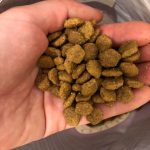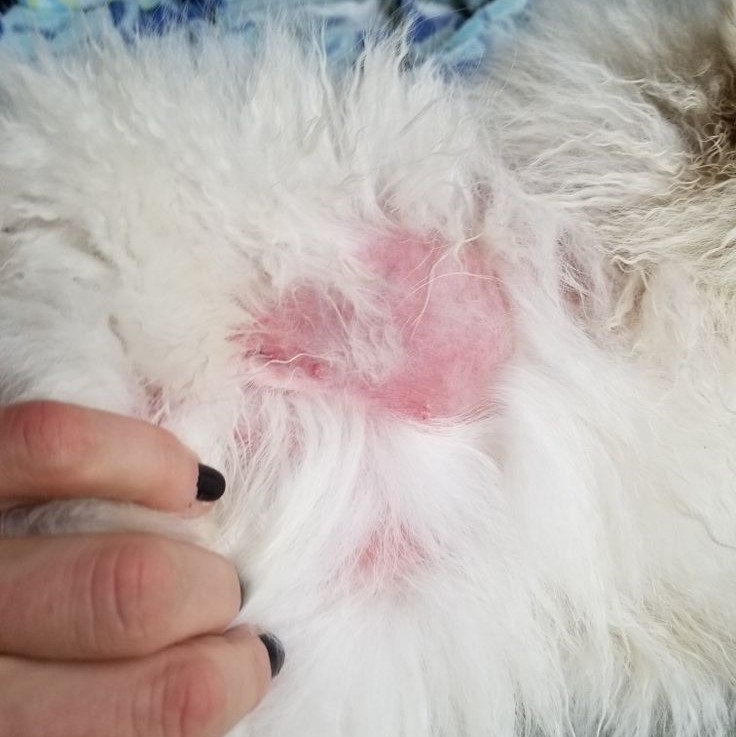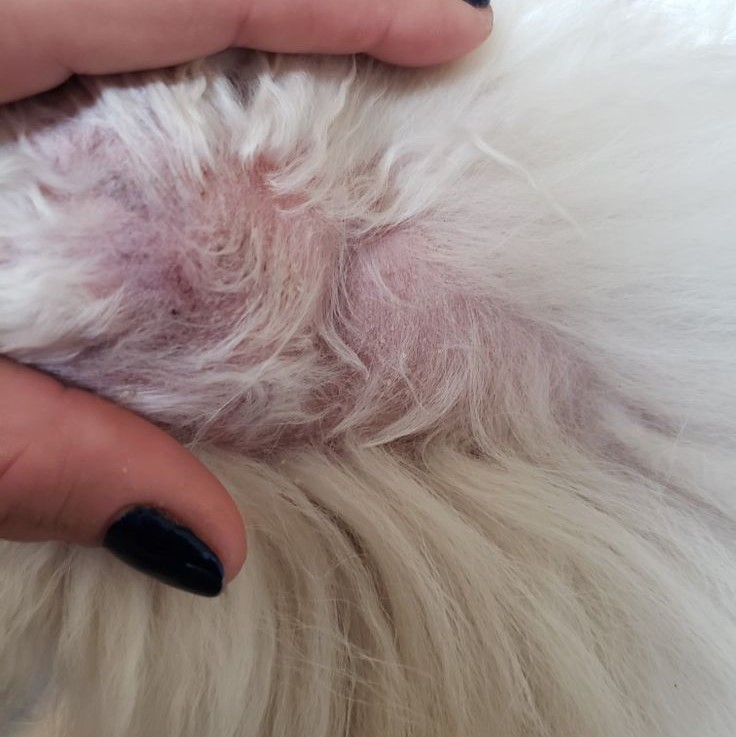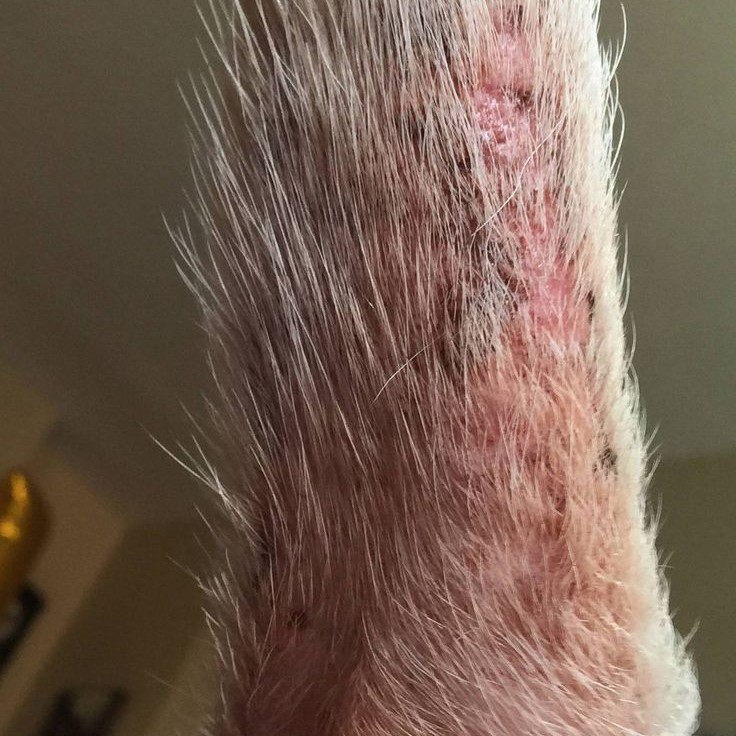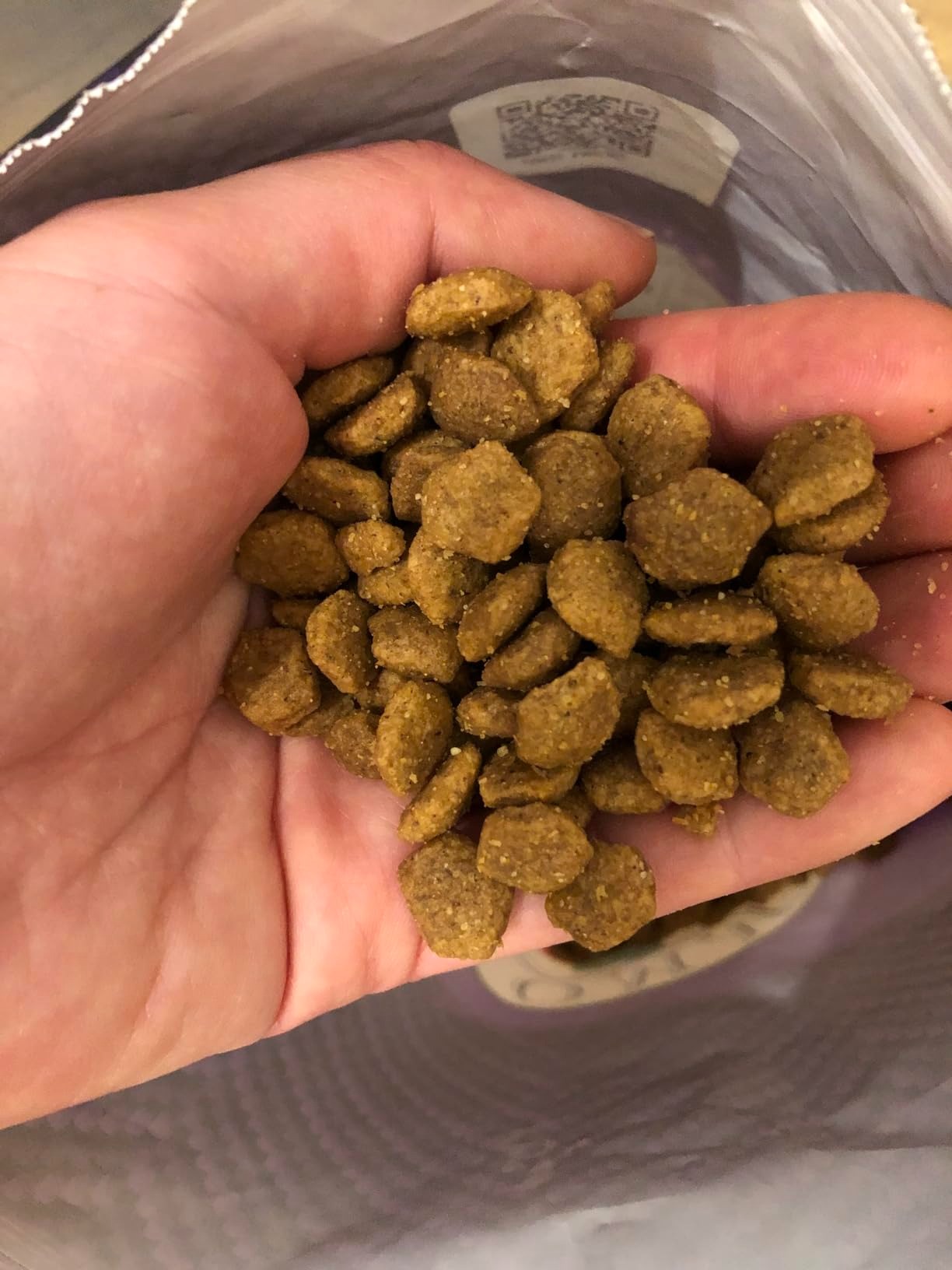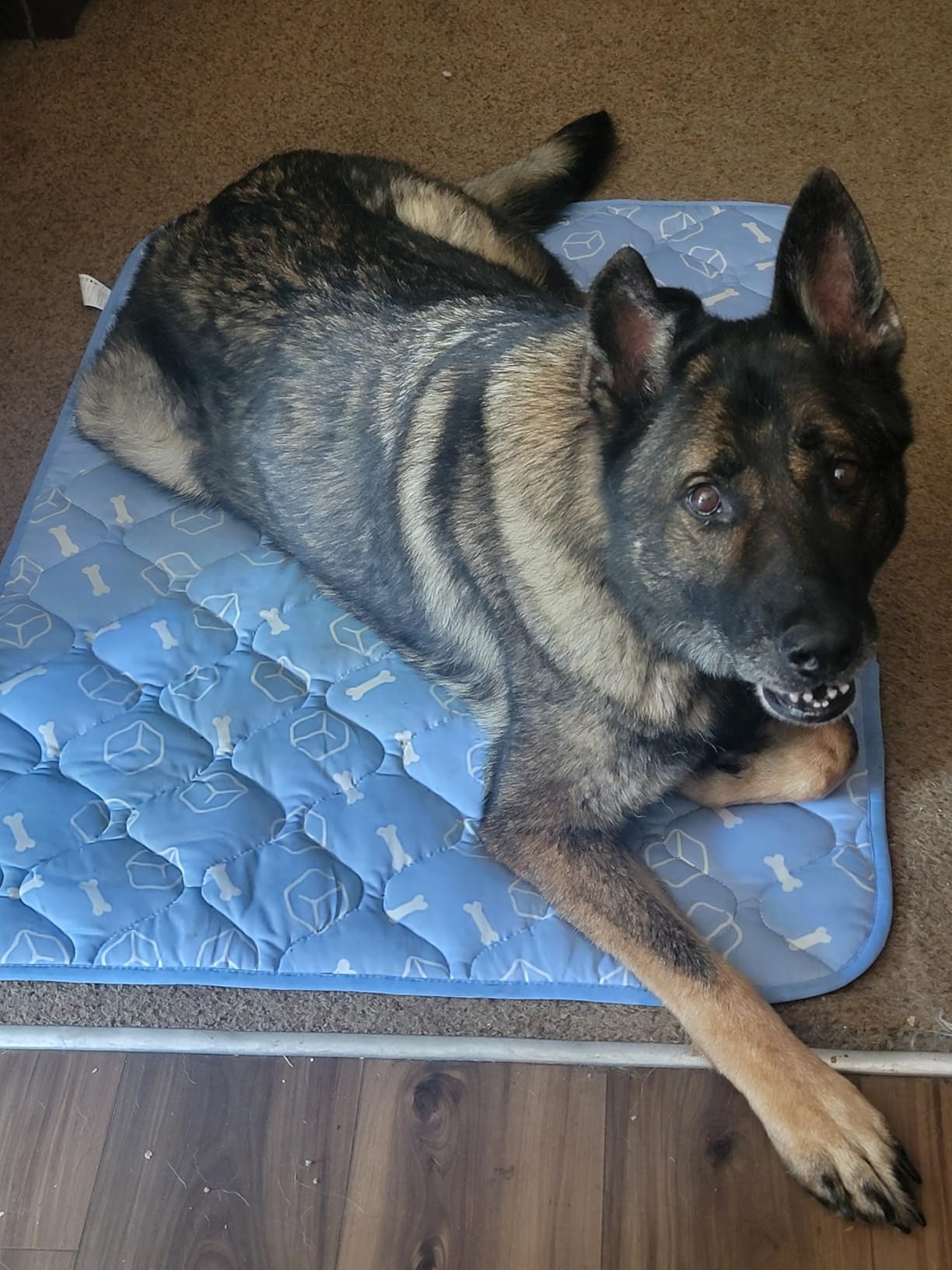Introduction
A dog skin rash can be concerning for any pet owner. Recognizing the signs early can make a significant difference in the health and comfort of your furry friend. Just like humans, dogs can experience skin issues that can cause discomfort, itching, and pain. This article provides essential information about dog skin rash, including its signs, causes, and best treatment practices. Given that skin problems are among the most common veterinary concerns, understanding them is vital for every dog owner.
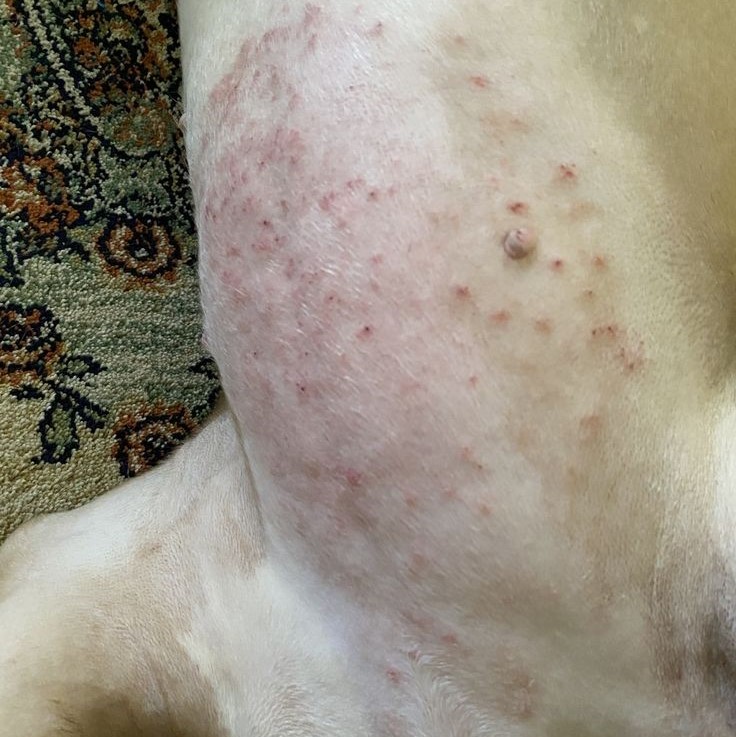
Common Signs
The first step in addressing skin issues is recognizing the signs. Common symptoms of dog skin rash include:
- Itching and Scratching: If your dog is scratching excessively or biting at their skin, it may indicate a rash. Chronic itching can lead to further irritation and results in more significant skin damage.
- Redness and Soreness: A rash is characterized by red, inflamed patches on the skin. Look for areas that appear swollen or discolored.
- Bumps or Blisters: Raised areas on the skin, such as bumps or blisters, are also common indicators of rashes. They may eventually pop and leak fluid, causing further complications.
- Flaky Skin or Dandruff: Some rashes can cause the skin to flake or develop unsightly dandruff. This often comes alongside dull-looking fur and can indicate underlying issues.
- Odor and Discharge: If there’s a foul smell emanating from your dog’s skin, it may be a sign of infection. Discharge from blisters or lesions is also cause for concern.
Recognizing these common signs early is essential for prompt action. If any of these symptoms appear, take action right away to prevent further discomfort for your dog.
Common Causes
Understanding the potential causes of dog skin rash can help pet owners address the problem effectively. Here are some common culprits:
- Allergies: In many cases, allergies are the root cause of skin rashes. Dogs can be allergic to various substances, including pollen, mold, dust mites, and food ingredients. Identifying the allergen through observation or allergy testing is crucial for treatment.
- Parasites: Fleas, ticks, and mites can all contribute to skin irritation and subsequent rashes. Regular flea and tick prevention is fundamental for your dog’s health.
- Infections: Bacterial or fungal infections can also lead to dermatitis, causing rashes that require veterinary treatment. Often, these infections occur secondary to excessive scratching or irritation.
- Environmental Factors: Seasonal changes may lead to skin issues. During warmer months, exposure to certain plants or pollens might provoke an allergic reaction, exacerbating skin conditions.
- Underlying Health Conditions: Conditions such as hypothyroidism, autoimmune disorders, or hormonal imbalances may also manifest through skin issues. It’s crucial to seek veterinary advice if these underlying conditions are suspected.
Identifying the cause of your dog’s rash will dictate the most effective treatment plan. Hence, a thorough understanding of these causes is essential for any responsible dog owner.
Diagnosis of Dog Skin Rash
Once you notice signs of a dog skin rash, the next step is seeking a proper diagnosis. Consult your veterinarian, who may perform a variety of tests to uncover the underlying cause of the rash. Some common diagnostic steps include:
- Physical Examination: A thorough examination will help the vet observe the rash and check for signs of parasitic infestations, infections, or allergies.
- Skin Scraping: This involves taking a sample from the affected area to check for parasites or fungi under a microscope.
- Allergy Testing: If allergies are suspected, the vet may recommend skin or blood tests to identify specific allergens.
- Biopsy: In some cases, a biopsy of the affected skin may be necessary to determine the underlying cause of the rash.
Accurate diagnosis is vital, as it determines the treatment plan and helps avoid potential complications while ensuring your dog receives the appropriate care.
Treatment Options
After identifying the cause of the rash, your veterinarian will recommend the best treatment options. Treatments may vary widely depending on the underlying issue but can include:
- Medications:
- Antihistamines: If allergies are confirmed, antihistamines may be prescribed to help alleviate itching and inflammation.
- Corticosteroids: In more severe cases, corticosteroids can be used to reduce inflammation and itching. However, they should only be used under veterinary guidance due to potential side effects.
- Topical Treatments:
- Medicated Shampoos: Regular bathing with medicated shampoos formulated for sensitive skin can help soothe irritation. Look for shampoos with oatmeal or aloe vera, which can provide relief.
- Creams and Ointments: Depending on the rash’s severity, topical solutions may also be beneficial to promote healing.
- Dietary Adjustments:
- If food allergies or intolerances are contributing to skin issues, switching to a hypoallergenic or limited-ingredient diet can often help resolve recurring rashes.
- Environmental Changes:
- Sometimes, removing allergens from the environment may provide significant relief. Frequent cleaning, using air purifiers, or avoiding certain outdoor activities can reduce exposure to allergens.
- Professional Treatments:
- In more complex cases, your vet may recommend advanced treatments such as allergy shots or immunotherapy, particularly for persistent allergic reactions.
A holistic approach often yields the best results, as managing dog skin rashes may require a combination of treatments. Always follow your veterinarian’s recommendations carefully to ensure your pet’s well-being.
Preventing Dog Skin Rashes
Prevention is always better than dealing with complex treatments. Here are several practices you can undertake to minimize the risk of your dog developing skin rashes:
Regular Grooming
- Importance of Regular Brushing: Regular brushing is essential for maintaining your dog’s coat in great condition. It helps to remove loose fur, dirt, and debris that can accumulate in their coat over time. By keeping their coat clean, you not only enhance your dog’s appearance but also contribute to their overall health and hygiene.
- Identifying Skin Issues Early On: Grooming sessions are an excellent opportunity for you to closely inspect your dog’s skin and coat. During brushing, you can check for signs of irritation, redness, bumps, or parasites like fleas and ticks. Early detection of any skin issues makes it easier to address them before they escalate into more serious problems, providing your dog with timely relief.
- Reducing Allergens: Regular grooming helps minimize allergens that may be trapped in your dog’s fur. Items such as pollen, dust, and dander can accumulate in their coat, potentially leading to allergic reactions or skin irritations. By frequently brushing your pet, you can significantly reduce the amount of these irritants, contributing to better skin health.
- Increased Bonding Time: Grooming can also be a wonderful bonding experience between you and your dog. Taking the time to brush them regularly reinforces your relationship, providing comfort and trust. Dogs often enjoy the attention and can feel more relaxed and content after a grooming session.
Flea and Tick Prevention
- Investing in Quality Prevention: Fleas and ticks are not just bothersome pests; they can lead to serious health issues for your dog, including skin irritations, allergies, and even disease transmission. Investing in high-quality flea and tick prevention methods is key to keeping your dog safe from these harmful parasites.
- Topical Treatments: Topical treatments are applied directly to your dog’s skin, usually between the shoulder blades, where they can’t lick it off. These treatments typically provide long-lasting protection by killing fleas and ticks on contact.
- Flea and Tick Collars: Another effective method is the use of flea and tick collars. These collars release active ingredients that repel and kill pests. They are a convenient option since they work continuously over several months, providing ongoing protection.
- Regular Oral Medications: Consult your veterinarian about oral medications that can prevent fleas and ticks. These may be given monthly or quarterly and are particularly beneficial during peak infestation seasons. Keeping your dog on a regular medication schedule is essential for effective prevention.
- Consulting Your Veterinarian: Regular discussions with your veterinarian about flea and tick prevention are imperative. They can provide personalized recommendations based on your dog’s breed, lifestyle, and any known health concerns.
Healthy Diet
- Balanced Nutritional Needs: Providing your dog with a balanced diet rich in essential nutrients is one of the best ways to promote overall health, including skin health. Protein, healthy fats, vitamins, and minerals are crucial for maintaining a shiny coat and healthy skin.
- Consulting a Veterinarian: Every dog is unique, and dietary needs can vary based on breed, age, and health status. Consulting with your veterinarian ensures you’re feeding your dog the best diet tailored to their specific needs. Your vet can guide you in choosing the appropriate dog food or dietary supplements.
- Hypoallergenic or Grain-Free Options: If your dog has a history of skin issues, such as allergies or sensitivities, special diets may be necessary. Hypoallergenic dog foods can often reduce allergic reactions, while grain-free options may prevent food sensitivities that lead to gastrointestinal discomfort or skin problems.
- Monitoring Food Allergies: Keeping an eye on your dog’s reaction to their food is vital. If they display any signs of food allergies, such as itching or gastrointestinal upset, consider discussing a dietary change with your vet.
Safe Environment
- Minimizing Allergen Exposure: Creating a safe environment for your dog involves minimizing exposure to potential allergens. This is particularly crucial during high pollen seasons when outdoor allergens are at their peak.
- Indoor Allergen Management: Regular cleaning of your home can significantly reduce the presence of indoor allergens. Frequent vacuuming, washing dog bedding, and using air purifiers can help maintain a clean living space, lessening the chance of allergies affecting your dog.
- Avoiding Allergenic Plants: Familiarize yourself with plants that might trigger allergic reactions in your dog. Keeping your pet away from known allergens, such as specific flowers or bushes, can effectively minimize allergy-related discomfort.
- Monitoring Outdoor Activities: During peak allergy seasons, consider limiting your dog’s outdoor time. Opt for walks during times when pollen levels are lower, typically early mornings or after rainfall.
Hydration
- Ensuring Adequate Water Intake: Proper hydration is crucial for maintaining your dog’s health. Fresh, clean water should always be available to keep your dog hydrated. Dehydration can worsen various health issues, including skin conditions, making it vital that your dog drinks enough each day.
- Benefits of Hydration for Skin Health: Staying hydrated helps keep your dog’s skin moisturized and functioning properly. Good hydration can prevent dry skin, flakiness, and irritation, reducing the likelihood of rashes and other dermal issues.
- Recognizing Dehydration Signs: Keep an eye out for signs of dehydration, such as excessive panting, dry gums, or lethargy. If you notice these signs, ensure your dog drinks more water or consult your veterinarian for further advice.
- Encouraging Water Consumption: If your dog tends to avoid drinking water, consider methods to encourage hydration. Offering flavored water or using dog water fountains can make drinking more appealing.
By taking proactive measures to maintain your dog’s overall health and safeguard them against potential irritants, you can significantly reduce the chance of experiencing recurrent skin issues or rashes.
Conclusion
In conclusion, understanding the symptoms, causes, and treatments of dog skin rash is vital for any conscientious pet owner. The signs of a dog skin rash can range from simple itching to significant inflammation; early recognition plays an essential role in ensuring your dog receives help promptly. With the right approach, including proper diagnosis and targeted treatment, in combination with proactive prevention strategies, you can mitigate the impact of skin issues on your dog’s quality of life. By staying informed and aware of your pet’s health, you can promote their well-being and ensure they lead a comfortable and happy life. Remember, when in doubt, consulting your veterinarian is always the best course of action for any skin concerns. Your furry friend’s health and happiness are worth it!

